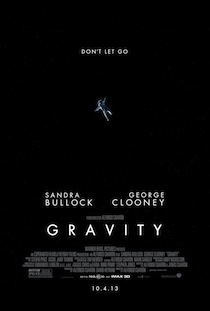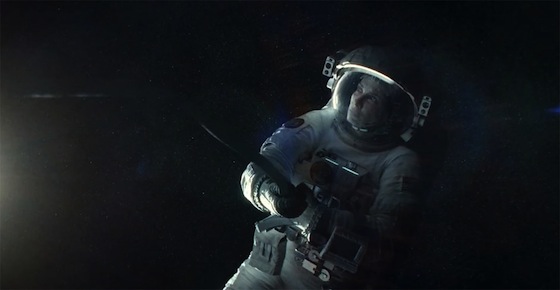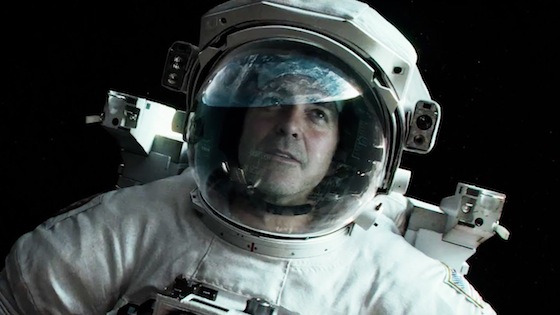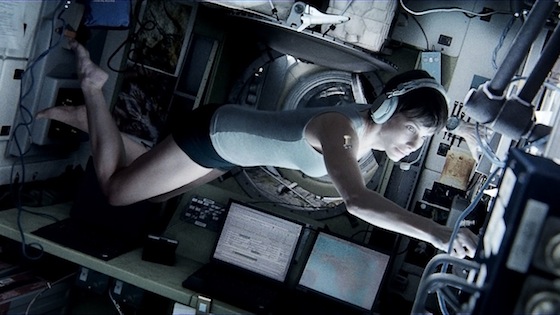 Alfonso Cuarón’s new film Gravity is a mix of sentimental personal journey and spiritual exploration that will dazzle some and confound others. It is a multilayered piece that will satisfy or alienate based on whether the viewer follows the apparent narrative or looks beyond the surface.
Alfonso Cuarón’s new film Gravity is a mix of sentimental personal journey and spiritual exploration that will dazzle some and confound others. It is a multilayered piece that will satisfy or alienate based on whether the viewer follows the apparent narrative or looks beyond the surface.
Gravity is about Ryan Stone (Sandra Bullock) a medical imaging scientist who is working on the Hubble telescope. The mission commander, Matt Kowalski (George Clooney), forces Ryan to abandon her mission when a deadly debris field threatens their lives and destroys the Space Shuttle Endeavour. The rest of the film focuses on Ryan’s and Matt’s desperate attempts to survive in a landscape that is not just unforgiving, but truly impossible.
The story itself is simple. Ryan and Matt are stuck in space. There is no air, food, or water in the vast emptiness of space, and the few opportunities to get back to the sustenance and protection of Earth are laughable.
It is this impossibility, or more accurately the mind-numbing improbability, of Ryan’s and Matt’s hope to survive that leads us into to the larger philosophical exploration. The very improbability of our species, compounded with the improbability of our own unique existence is on display in Cuarón’s Gravity.

When Ryan and Matt are faced with daunting odds, navigating their way from a derelict shuttle to the International Space Station, and then on from the ISS, Ryan begins to shut down psychologically. The likelihood of a safe return has moved from unlikely to impossible. When there is nothing left to struggle for, why should she struggle on?
This is explored somewhat in the surface story as Ryan and Matt talk about their homes and families back on Earth, but is developed more effectively in the visuals. The spinning and constantly moving camera that rotates with the astronaut or the universe as needed to ground the viewer. When we must sympathize with Ryan’s terror, we are inside of her helmet, pressed to her cheek, the entirety of the universe spinning in the background. When we are pleading for her to calm herself and find a way to communicate with Matt, the camera is outside in a stable galaxy, watching Ryan tumble and flail.

Our existence is improbable, and yet inevitable.
The desire to live is not up to an individual, but is offered as something of an universal mandate in Cuarón’s film. Does the fact we do exist make our existence inevitable? There is a shot of metaphoric gestation in Gravity that is one of the most daring and beautiful shots I have seen in some time. Ryan removes her suit aboard the ISS, and floats in the protective peace of the empty space station. It becomes a womb to her, and she must soon choose the nature of her rebirth.
The entire film can work as a visually stunning personal struggle, a philosophical exploration about our understanding of life or death, an allegory for the insurmountable obstacles that face each of us daily and make our lives valuable and terrifyingly fragile.

If you want to explore the level of detail that Alfonso Cuarón and his brother and cowriter Jonás Cuarón go to, you could look around for Jonás’ short film “Aningaaq” which tells the story of Gravity from the perspective of the Inuit man in Greenland. You could I’m sure make something of the fact that Aningaaq is the name of the moon in the mythology of the Greenland Inuit, and that Aningaaq forever chases his sister, the sun. Perhaps Ryan’s last name Stone should be scrutinized or even Matt’s last name of Kowalski, which translates to Smith or Blacksmith, is worth a look.
I point these tidbits out not because you need this information to enjoy Gravity. The visuals, the cinematography, visual effects and sound design should garner your respect, but if you’re interested in more than just a rich visual buffet, Gravity can keep you busy pondering its many layers.







Comments on this entry are closed.